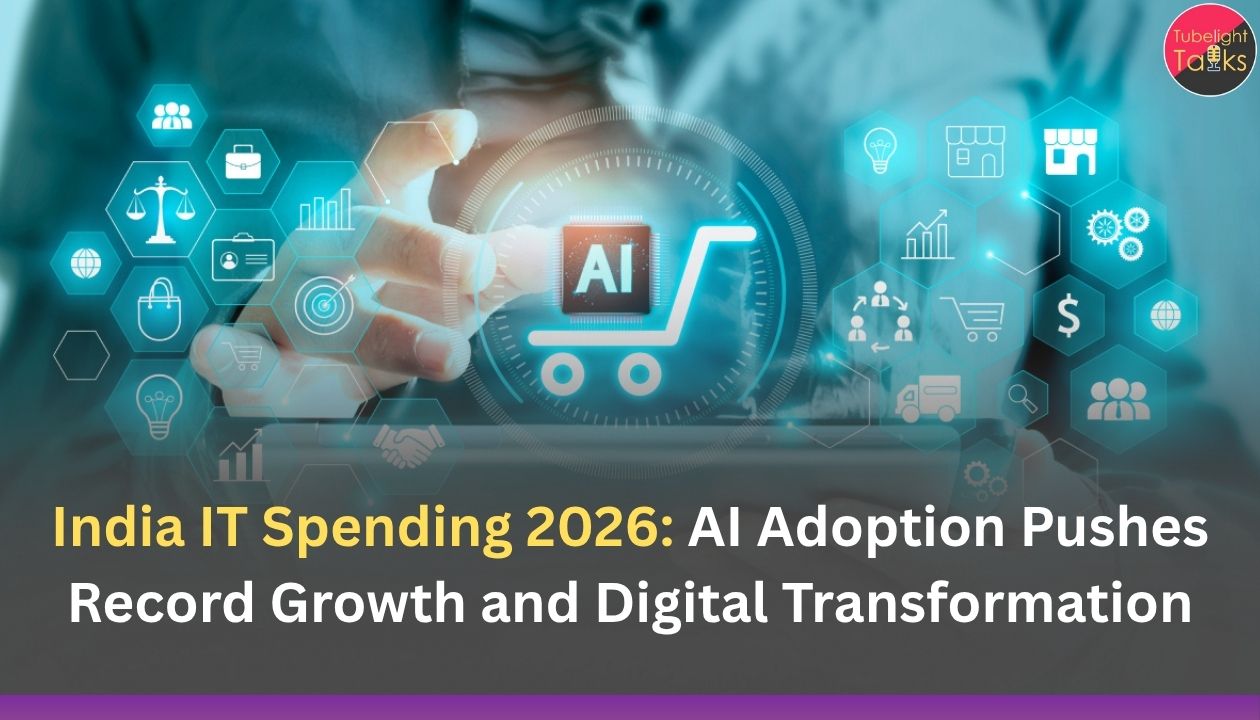Global AI Race 2026: As we move into 2026, the global race for artificial intelligence supremacy has entered a critical phase. This competition is no longer just about breakthroughs in models — it’s about infrastructure, energy supply, and geopolitical strategy. The United States continues to grab headlines for its research leadership and cutting-edge AI labs. China, on the other hand, is leveraging its immense manufacturing capacity and state support to scale up rapidly.
Meanwhile, India is carving out its own path through “frugal innovation” and a deep pool of tech talent. In this article, we compare the strengths, challenges, and strategic bets of these three nations, and explore what might tilt the balance in the years ahead.
The Current Landscape of Global AI
Research Leadership: According to a recent academic study, while the U.S. and EU dominated AI research in the early 2000s, China has climbed dramatically in publication share — by 2025, it accounted for nearly 36% of global AI publications.
Infrastructure & Compute: Frontier AI is being powered by supercomputers. A recent analysis shows that from 2019 to 2025, the computational performance of AI supercomputers doubled every nine months. The majority of this computer — in terms of performance — is currently concentrated in the U.S., but China is catching up.
United States: Innovation, Talent & Research
Deep-Tech Ecosystem: The U.S. remains home to many leading AI labs (OpenAI, Google, Anthropic), and its venture capital ecosystem is still unmatched. Analysts project the U.S. AI market will continue commanding premium segments.
Supercomputing Footprint: Most of the world’s highest-performing AI supercomputers are located in the U.S., giving it a major advantage in training large models.
Energy Constraints: However, a key constraint is emerging: power. According to Goldman Sachs, AI data centers in the U.S. already account for ~6% of total electricity demand, and this could rise to 11% by 2030 — potentially stressing the U.S. grid.
Trust and Adoption: Trust in AI is lower among Americans, compared to Chinese users: in a recent survey, only 32% of U.S. respondents said they trust AI, versus 72% in China.
China: Scale, Manufacturing & Deployment
Manufacturing Powerhouse: China is aggressively automating and integrating AI in its manufacturing. In 2024 alone, it installed nearly 10 times as many industrial robots as the U.S.
Chip Ambitions: Despite export restrictions from the U.S., Chinese firms like Huawei are pushing domestic AI chip development. However, the U.S. estimates that Huawei will produce no more than ~200,000 advanced AI chips in 2025.
Energy Advantage: While the U.S. grid may tighten, China is reportedly building spare capacity — Goldman Sachs projects China could have ~400 GW of spare capacity by 2030 to support data center growth.
Population & Trust: With a huge domestic market and high trust in AI, China can roll out AI at scale, especially for consumer and industrial applications.
India: Frugal Innovation & Emerging Strengths
Frugal Innovation: India is betting on cost-effective AI development. Instead of building ultra-expensive computer farms, many startups and labs are focusing on “lean” but powerful models. According to tech observers, India is using its large talent pool for innovation with relatively lower costs.
Talent Pool: India has one of the largest pools of software engineers and data scientists. This gives it an edge in scalable AI development, especially for business applications.
Policy & Strategic Push: India is hosting the AI Impact Summit in February 2026, signaling its ambition to be a global AI player.
Challenges: India’s constraints remain real: lack of super-scale computing infrastructure, limited domestic chip manufacturing, and reliance on foreign hardware. Plus, energy and data infrastructure may limit very large-scale model training.
Strategic Scenarios for 2026 and Beyond
U.S. maintains lead in frontier research: Due to its deep tech ecosystem and supercomputing edge, the U.S. is likely to continue being the go-to for cutting-edge AI.
China scales horizontally: With its manufacturing strength, China may lead in deploying AI at scale in industry, robotics, and consumer-facing applications.
India’s niche growth: India could emerge as a hub for “affordable AI for emerging markets” — focusing on cost-sensitive solutions and localized AI.
Bottlenecks are shifting: Rather than just chips or talent, power (electricity) and energy infrastructure could become the limiting factor in the race — especially for nations with rapidly growing data centers.
Risks & Ethical Considerations
Energy Sustainability: Huge AI compute demands strain power grids; without green energy, the environmental cost may be high.
AI Inequality: If only richer nations or companies can afford large computers, AI could deepen global inequalities.
Governance: With power concentrated in few hands, AI governance (safety, misuse) becomes a major concern.
Trust & Adoption: Societal trust in AI systems will shape long-term adoption — and trust levels vary widely across countries.
What to Watch in 2026
- The outcomes of the AI Impact Summit in Delhi.
- How countries invest in data center capacity and renewable energy for AI.
- Growth of domestic AI chip production in China and possibly India.
- Changes in global AI regulation and standards: who sets the rules?
Sant Rampal Ji Maharaj: A Moral Compass for the Global AI Race
From the wisdom of Sant Rampal Ji Maharaj, we learn that true power lies not just in accumulation, but in responsible use and service to humanity. In the global AI race, nations may build immense technological power, but its real value will be measured by how it benefits people, uplifts communities, and preserves dignity. Just as Sant Rampal Ji Maharaj emphasizes selfless service (seva), AI must be developed and deployed in a way that serves all — not just enriches a few.
FAQ: Global AI Race 2026
Q1: Which country is currently leading in AI research?
The U.S. remains a leader in frontier AI research, but China has rapidly increased its share of AI publications.
Q2: Can China outpace the U.S. in supercomputing power?
It’s possible: while the U.S. dominates today, China’s investments in infrastructure and data centers could close the gap.
Q3: What is India’s strategy in the AI race?
India is focusing on frugal innovation, leveraging its large tech talent pool, and building policy frameworks (e.g., hosting the 2026 AI Impact Summit) to boost its AI ecosystem.
Q4: Why is energy such a big issue in AI development?
Training large AI models requires vast computing power, which in turn needs huge electricity. Without adequate power infrastructure, data centers may become bottlenecked.
Q5: What are ethical risks in the AI race?
Risks include unequal access to AI, environmental damage from power use, lack of global regulation, and potential misuse of AI. It’s important to build AI responsibly.










